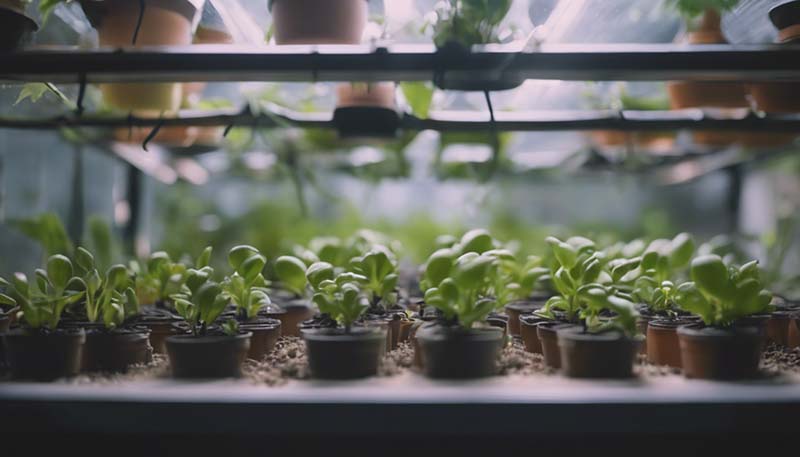Indoor Gardening: The Science of Plant Propagation
Welcome to our comprehensive guide on the science of plant propagation for indoor gardening enthusiasts. In this article, we will explore various methods of propagating plants, the science behind these methods, and tips for success in your indoor garden.
Introduction to Plant Propagation
Plant propagation is the process of creating new plants from existing ones. This can be done through sexual reproduction (from seeds) or asexual reproduction (cloning). Indoor gardening offers a unique environment for propagation, as it allows for greater control over the growing conditions.
Advertisement
Types of Plant Propagation
1. Seed Propagation
Seed propagation is the most common method of plant reproduction. It involves planting seeds in a suitable growing medium and providing the necessary conditions for germination and growth.
2. Cuttings
Cuttings involve taking a piece of a plant's stem, leaf, or root and encouraging it to develop roots and grow into a new plant. There are two main types of cuttings: stem cuttings and leaf cuttings.
3. Layering
Layering is a propagation method where a plant's stem is encouraged to root while still attached to the parent plant. Once the roots have developed, the new plant can be separated and potted.
4. Division
Division is suitable for plants that grow in clusters or have multiple stems. The parent plant is dug up and divided into smaller sections, each with its own roots, which can then be planted separately.
5. Grafting
Grafting involves joining the tissues of two different plants to create a single, genetically diverse plant. This technique is often used to improve a plant's resistance to disease, increase yield, or change the plant's characteristics.
6. Tissue Culture
Tissue culture is a laboratory-based method of plant propagation that involves growing plant cells or tissues in a nutrient-rich medium under sterile conditions. This method is used for mass propagation of specific plant varieties.
The Science Behind Plant Propagation
Understanding the science behind plant propagation can help gardeners improve their success rates. Here are some key concepts:
1. Cell Division and Growth
Plant growth and propagation are driven by cell division and differentiation. The meristematic cells at the tips of stems and roots continuously divide, allowing for growth and the formation of new plant structures.

2. Hormones and Rooting
Plant hormones, particularly auxins, play a crucial role in the rooting process. These hormones stimulate cell division and elongation, encouraging the formation of roots in cuttings.
3. Wound Response
When a plant is cut or damaged, it triggers a wound response that can promote the formation of callus tissue. This callus tissue can then differentiate into new roots or shoots, depending on the plant's genetic programming and environmental conditions.
4. Environmental Factors
The environment in which propagation takes place can significantly impact success. Factors such as temperature, humidity, light, and the presence of nutrients can all influence the rate and success of plant propagation.
Tips for Successful Indoor Plant Propagation
Here are some tips to help you achieve success with indoor plant propagation:
1. Choose Healthy Parent Plants
Healthy plants are more likely to produce healthy offspring. Choose parent plants that are free from disease and pests.
2. Use the Right Growing Medium
The growing medium should provide adequate support, drainage, and aeration. Common options include soil, perlite, vermiculite, and coconut coir.
3. Control the Environment
Maintain optimal temperature, humidity, and light levels for the specific propagation method and plant species you are working with.
4. Sterilize Tools and Containers
Sterilizing your tools and containers can help prevent the introduction of pathogens that can harm your new plants.
5. Be Patient
Plant propagation can take time, so be patient and give your new plants the time they need to establish and grow.
6. Learn from Experience
Not every propagation attempt will be successful. Learn from your successes and failures to improve your propagation techniques over time.
Conclusion
Indoor gardening offers a unique opportunity to experiment with plant propagation. By understanding the science behind these methods and following best practices, you can successfully propagate a wide variety of plants and enjoy a thriving indoor garden.
Happy propagating!
Comment